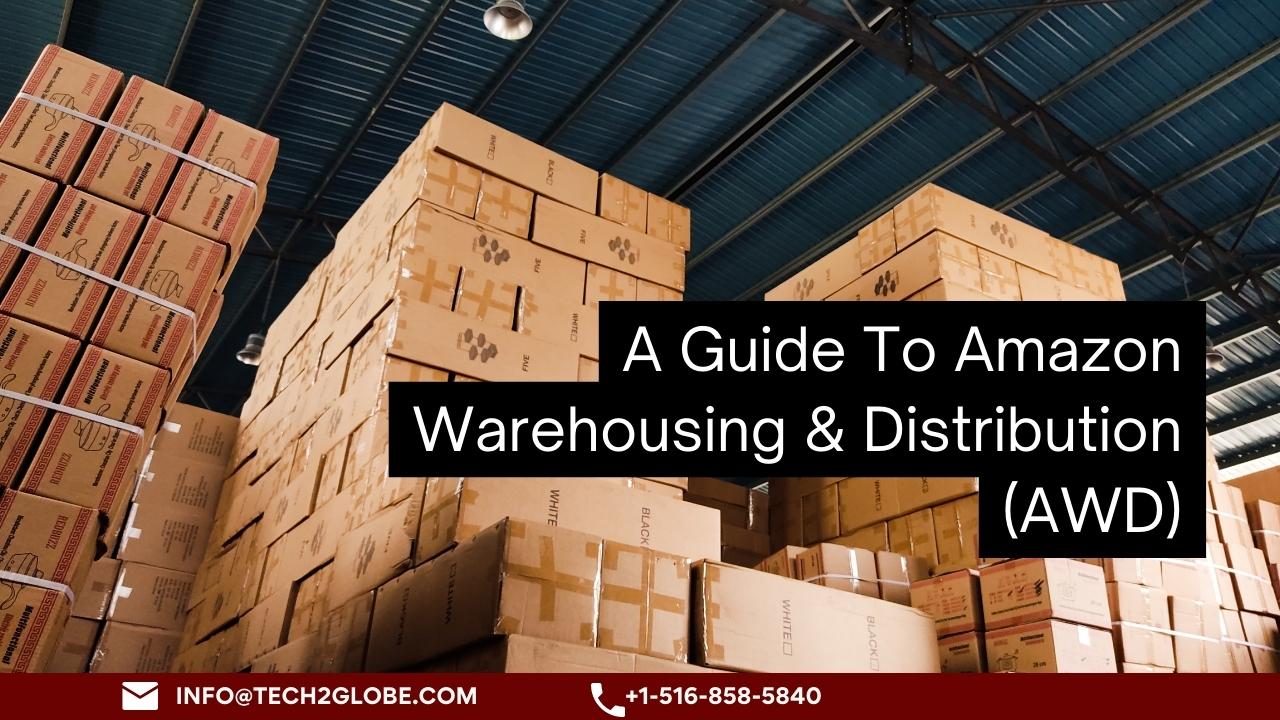More than 90% of the top Amazon sellers use FBA, or Fulfillment By Amazon. FBA provides access to one of the most advanced fulfilment networks in the world because it is associated with the coveted Prime label and delivers a two-day shipping turnaround. The recent years have not been entirely smooth for both Amazon and FBA sellers due to the fact that Amazon continues to experience supply chain and labour rights, that FBA fees, stockpiling caps, and storage limitations are subject to change, and that consumer spending is still affected by macroeconomic concerns.
Amazon Warehousing & Distribution (AWD): What Is It?

In 2022, Amazon introduced AWD, a 3PL and bulk storage solution that it makes available to vendors on independent marketplaces. According to Amazon’s definition, Amazon Warehousing & Distribution (AWD) is a brand-new third-party logistics (3PL) service offer by Amazon Supply Chain. AWD provides flexible and cheap upstream bulk inventory storage and delivery for your business.
AWD’s main objective is to help brands that are facing issues with stockouts and FBA storage limitations. The long-term inventory storage solution allows FBA businesses to avoid stockouts and automatically replace goods with Amazon Fulfillment Centers and the Amazon Fulfillment Network.
Advantages Of Amazon Warehousing & Distribution:
1. By employing auto-replenishment, sellers can get past FBA storage constraints.
2. Sellers that use auto-replenishment can avoid Amazon stockouts.
3. There is presently no stock cap for AWD products, though this may change if/when the solution gains more traction and/or if/when Amazon runs out of storage capacity.
4. Vendors won’t hoard out-of-date inventory with AWD.
5. The “Global Inventory Viewer” functionality allows sellers to view AWD and FBA inventories in their Seller Central Accounts.
Disadvantages Of Amazon Warehousing & Distribution:
1. It is not possible to ship stock from both AWD and FBA in the same truckload.
2. From their facility to AWD, sellers are in charge of establishing travel plans and paying for associated costs.
3. Sellers cannot send packages to AWD; only Less-Than-Truckload (LTL) shipments are accept there.
4. Inventory of Oversize and Extra-Large products are not eligible for the programme at this time because AWD only permits Standard Size products.
5. AWD prohibits packing with multiple SKUs (each individual SKU must be shipped in its own box).
6. The following items are prohibited by AWD: shoes, watches, jewellery, high-value commodities, Amazon devices, gift cards, and groceries. Hazardous products are also prohibite.
In 2023, What Will Happen To AWD And Amazon?
Amazon has expanded its Purchase with Prime programme while also enhancing the logistics and services provided by Amazon Warehousing & Distribution. Since this solution is still in its infancy, Tech2Globe will update you if any new features or changes to the AWD programme made.
Amazon has stated that AWD features are being created for 2023. The following is a list of what we anticipate happening in the forthcoming year:
1. You may have more control over the movement of inventory if you choose not to enable 100% auto-replenishment at the ASIN level.
2. Access to alternative online markets for bulk distribution.
3. Ability to link other stock locations with Amazon’s bulk delivery
4. Before shipping to AWD, contact AWD to confirm storage plans and space availability.
5. The potential addition of non-sort sizes, footwear, and perishable items to the choices.
Conclusion
To keep up with market changes, competitors, and new initiatives, inventory management, listing optimization services—you need a full-time job. If you require help with any of it, take into account working with an established Amazon wholesaler or Amazon consulting service provider.










